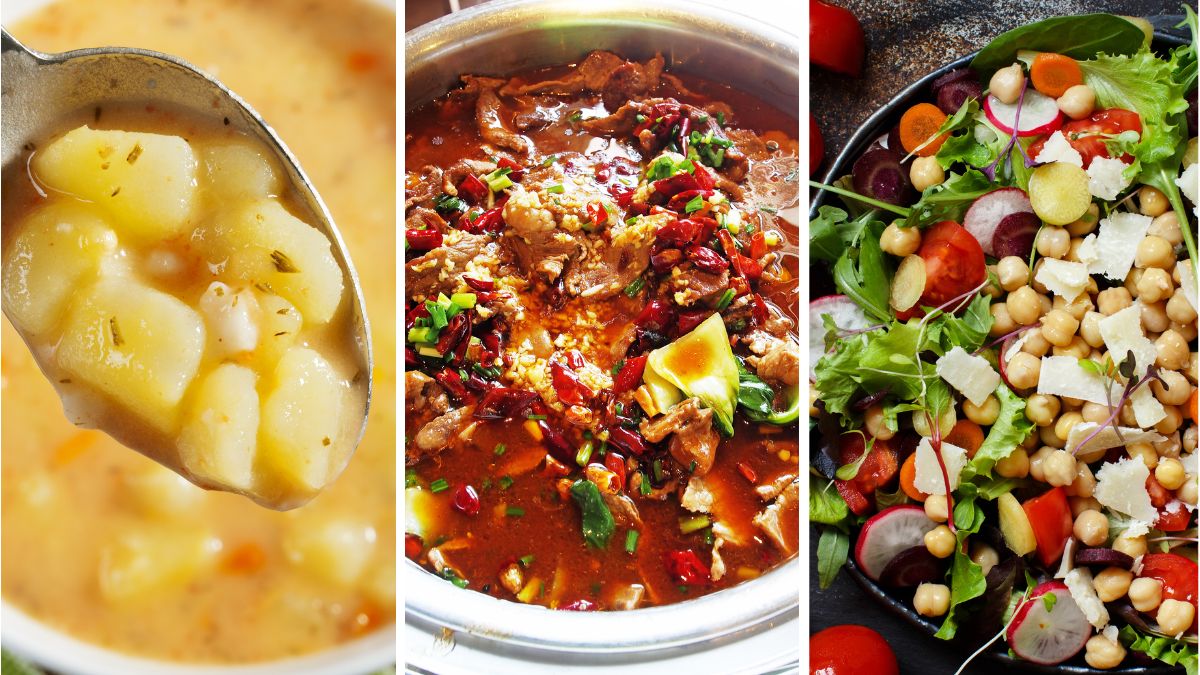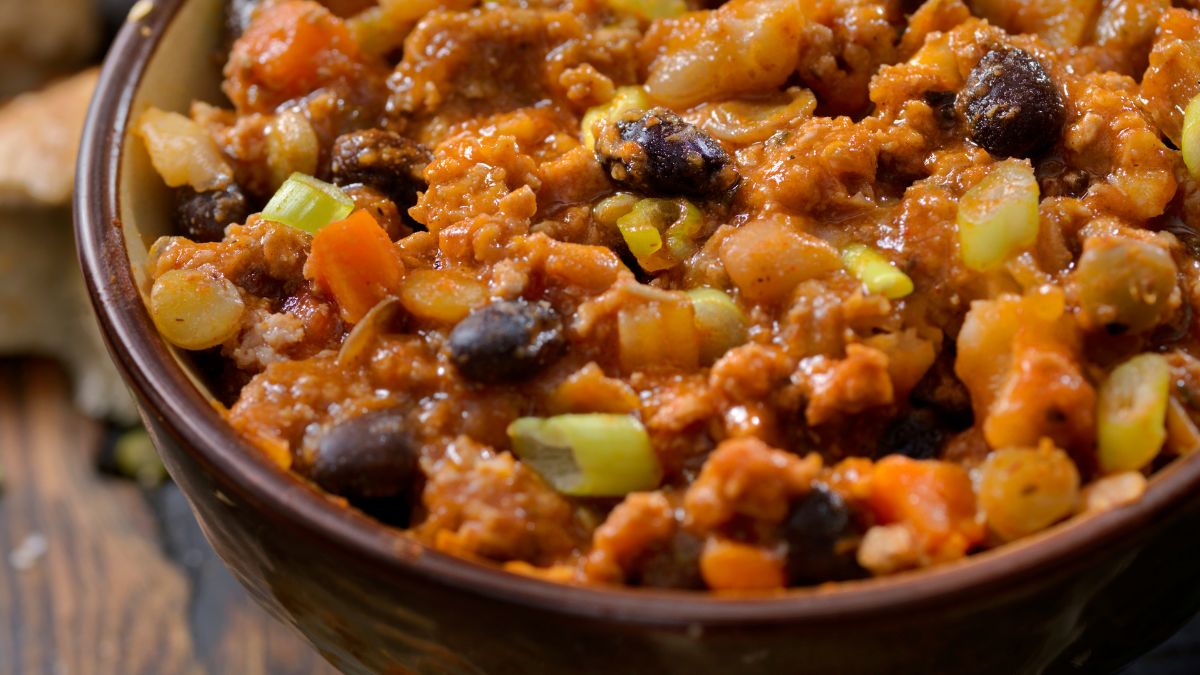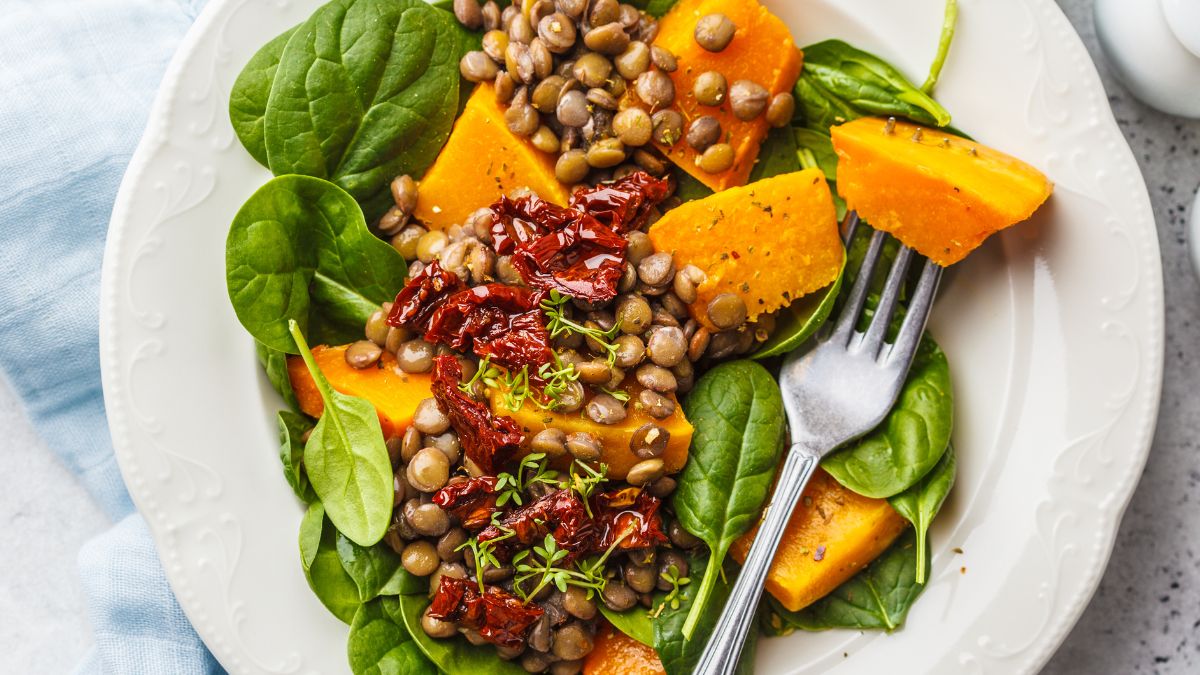The Best Substitutes for Corn in Soups, Chili & Salads

For me, corn is an essential part of any dish that requires thickening and subtle sweetness, even when the original recipe doesn’t call for it. Corn gives a unique texture to sauces, soups, stews, and any dish that is supposed to be thick but moist. Still, I feel like you always have to have a few tricks up your sleeve for those moments when you need corn, but there’s none in your pantry stock. So, what are the best corn substitutes in soups, chili, and salads?
The best corn substitutes include sweet potatoes, black beans, avocado, chickpeas, lentils, red bell peppers, etc. Soups work best with potatoes, carrots, and celery as corn substitutes, salads with red bell peppers, chickpeas, green lentils, and quinoa, and chili works best with split peas, lentils, and chickpeas.
Having options is always a great idea, especially when it comes to food and cooking. Picking the right corn substitute for your dish is crucial, and I can tell you that I have had quite a few failed experiments. So, to help you elevate your dish, in this article, I will let you in on a few tasty secrets about corn substitutes.
Corn Substitutes in Any Soup
If there is a dish that can handle as many flavors and as many ingredients as you want, it’s definitely soup. There is no rule as to what you can add to the soup as long as you like the flavor. Adding corn to soup makes it thicker and creamier, with sweet undertones that only intensify the rest of the flavors.
Glance below to see what corn substitutes you can use to cook a delicious soup.
Potatoes
Diced or cubed potatoes are excellent corn substitutes for soup. If you choose to use sweet potatoes, your soup will be more on the sweet side, and if you go for regular potatoes, it will thicken, but they won’t affect the flavor.
You can dice, cube, or even shred them, and they will still do a great job. I sometimes cook and mash the potatoes and add them to the soup. The effect is nearly the same as adding store-bought starch.
Whichever option you choose, you will end up with a creamy, rich, and delicious soup.
Carrots
As a frequent part of any soup recipe, carrots have established themselves as a must in many soup recipes. If you want to use them as corn substitutes, you can, and your soup will be delicious.
Carrots have a slight sweetness, not as pronounced as corn, but still noticeable, so they will deliver that part perfectly. Also, they are very soft when cooked, which makes them excellent thickeners. If you want to substitute for the corn texture and get a kernel-like effect, dice the carrots and throw them in your soup.
If it’s the thickness you are after, I suggest you cook and mash them before adding them to the soup.
Celery

Celery is also a known soup ingredient, but it is often used in small amounts because of its intense flavor and strong aroma. If you want to use celery as a corn substitute in soup, you’ll need to add more of it than you normally would, so be prepared for a celery-dominated dish.
If you don’t mind the pronounced celery note, dice the celery and add it to the soup. You will thicken the consistency but also add a little more texture. Celery has a thread-like texture, so be sure to cook it well because it can be a little unpleasant to chew.
Corn Substitutes in Chili
We all know and love chili for its earthy and spicy tones. Rich and creamy, chili is a great place to use corn to thicken it. The good news is corn isn’t the only thing you can add to chili to create its silky and rich texture. Take a look below to find some tasty corn substitutes for chili.
Split Peas
Split peas are an excellent corn substitute for chili. They provide the same softness and richness of texture with an additional and more intense earthy note. This earthy note might be a problem for some because the chili is already from the beans.
Still, it isn’t too pronounced, so you will likely be able to handle it. Split peas also add a splash of color to the chili and a slight bitterness, which pierces through the spicy tones of the dish. You don’t have to make any adjustments in terms of the amount and add as many split peas as you like.
Chickpeas
Its nutritional properties aren’t the only thing that sets chickpeas apart from other foods. They are extremely versatile and can easily fit into various different dishes, chili among them.
When cooked, chickpeas are soft and tender, but they keep their shape very well. So, when you add them to chili, they thicken the consistency while adding color and texture. Their mild flavor and subtle bitterness are great additions to the overall chili flavor, which is why I sometimes prefer using chickpeas in chili instead of corn.
Lentils

Coming from the same family as the previous ingredients, as well as sharing the same food type as beans, it is only logical that lentil is an excellent substitute for corn in chili. Slightly earthy, hearty, and very delicious, lentil adds warmth and wholesomeness to chili.
You will definitely be able to feel it in your chili but believe me, you will enjoy it. Lentils are also very soft when cooked, and they blend in with the rest of the ingredients, becoming fully integrated into the dish’s consistency.
Substitutes for Corn in Salad
Salads are often where people you corn even if they don’t use it regularly. So, I think that corn is mostly used in salad, so having the right corn substitute is crucial. Moreover, salads are the trickiest because they contain fresh ingredients, and using the wrong corn substitute leaves little place for a cover-up.
Below are some delicious corn substitutes for salads:
Red Bell Peppers
Red bell peppers are known for their rich and thick structure and smooth texture. They are also very generous in flavor with a pronounced but delicate sweet note. When used in salad instead of corn, they provide you with the corn’s sweetness, adding a little peppery twist.
I love using red bell peppers in salads because they are very easy to dress, and you can use any type of dressing you want to spruce up the flavor. Dice them in small dice and throw them in the salad to create a corn-like sensation on the palate.
Don’t use green bell peppers, though; they are slightly bitter and won’t deliver the corn’s tender tones.
Chickpeas
Chickpeas are great corn substitutes for salads. All you need to do is let them soak overnight to soften, and they will get the same texture as corn. Since chickpeas are larger than corn kernels, you might want to add fewer chickpeas than the amount of corn you usually add to salads.
Chickpeas are very gentle in flavor featuring a soft earthy undertone, and they hold their shape pretty well. Dress and season your salad any way you want, as chickpeas are incredibly versatile in that regard.
Green Lentil

Unlike red lentils, which tend to split and fall apart when cooked, green lentils are tougher and hold their shape well. As a corn substitute, they deliver the same texture and grainy consistency as the corn, but they don’t substitute for the flavor that much.
While corn is sweet, green lentils are more on the earthy side, and sometimes they can taste a bit bitter. Still, if you mind the lentil earthiness, you can easily cover it up with some vinaigrette dressing or balsamic glaze.
Quinoa
Quinoa is a well-known salad ingredient; as far as salads go, it’s often used as the main star. As a corn substitute, it does a great job delivering the texture and sweetness of corn, adding a little magic of its own.
It creates a thicker and richer salad; you can dress however you like. My favorite is plain sour cream and mayo dressing.
I would love to know about your favorite corn substitutes for these dishes and how you use them! Please write them down in the comments below!
